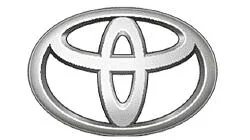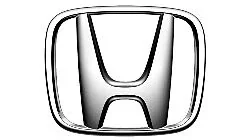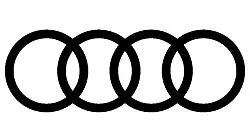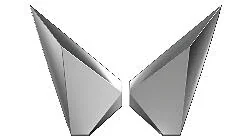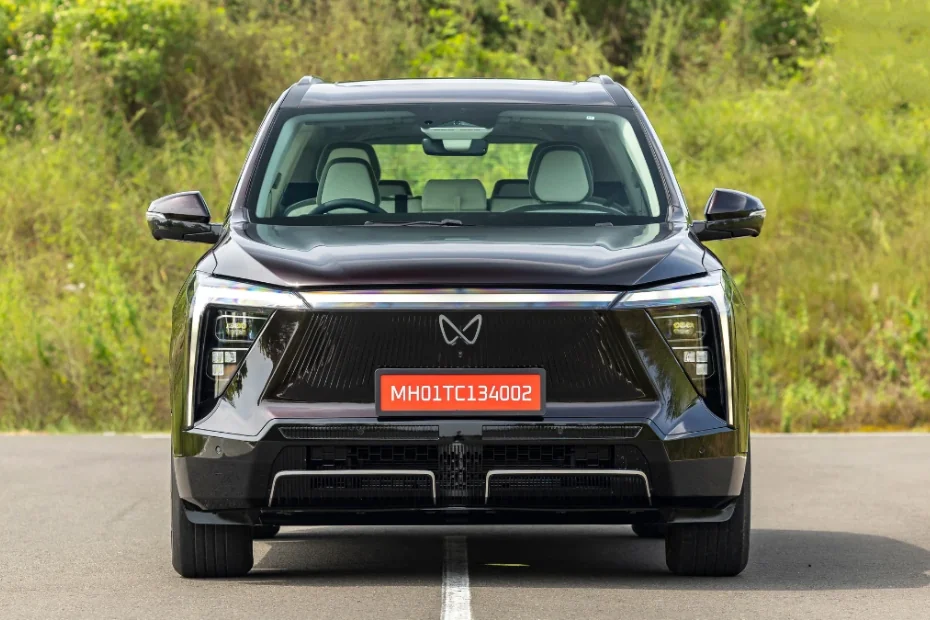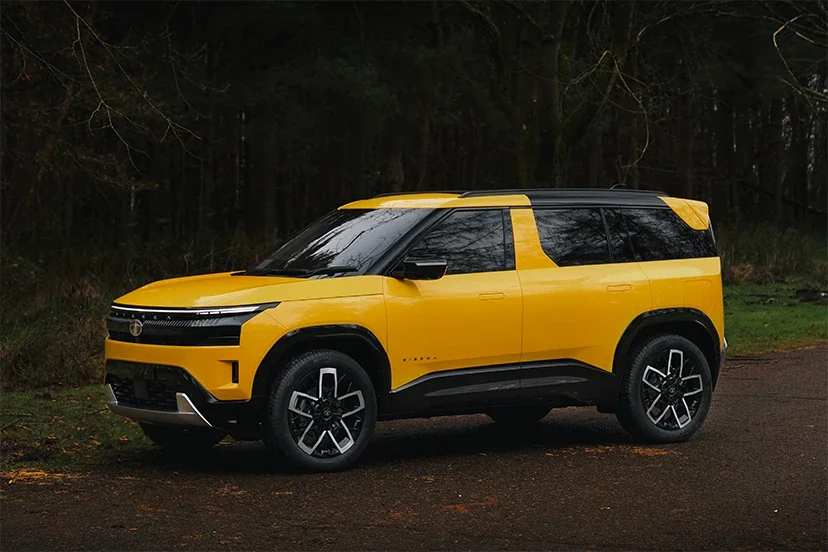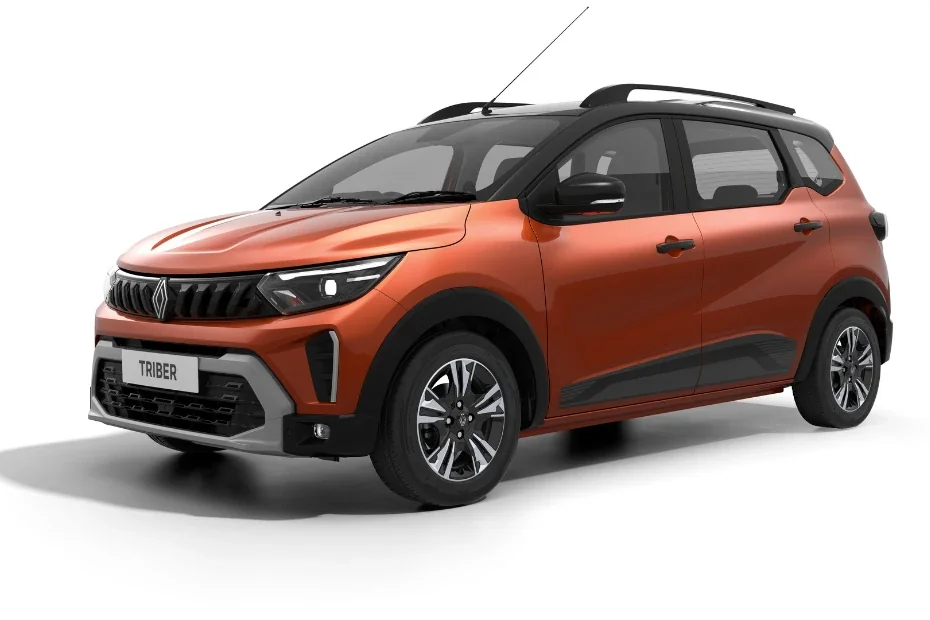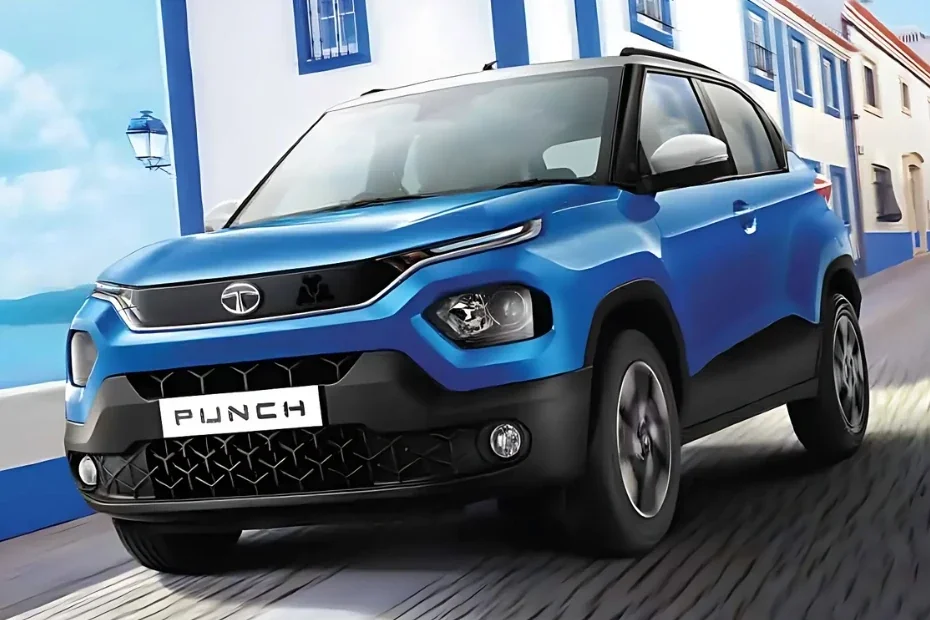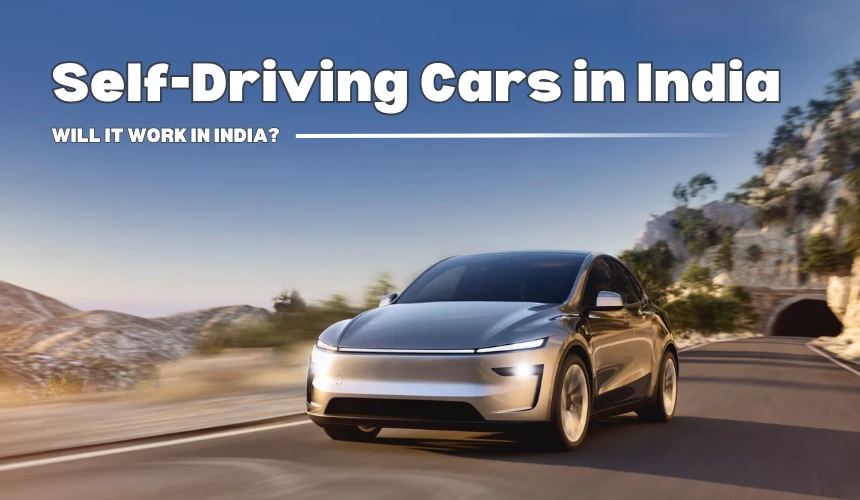
1 Crore rupees is a lot of money. It can buy you a decent house, help you start a new business venture or help purchase a couple of new cars from premium brands. But what if you want to spend more than 1 crore for a brand-new car? The turn of the decade has made purchasing luxury cars above Rs 1 Crore a lucarative option for many. According to a new research, there is a sudden in-flux of money that has broken the luxury barrier for the Indian consumers. So what is the best car above Rs 1 crore. Today, we pick our choices for the ‘Top 5 New Luxury Cars You Can Buy for Around Rs 1 Crore in India’.
Mercedes-Benz GLS: Price Rs 1.19 - Rs 1.21 Crore

The GLS is the largest SUV in Mercedes-Benz India’s product portfolio. Currently, in its third generation, the GLS has been given a complete design overhaul that makes it look more premium and luxurious than before. The SUV’s front end features all-LED headlights with Mercedes’ new signature LED while the large front grille offers an aluminium twin slat design. The front bumper provides wide air intakes with a chromed-out skid plate at the bottom. Moving to the side, the GLS hides its sheer size well with its clever surfacing and softer edges. You will also notice the flared wheel arches, 21-inch alloy wheels, chrome surrounds on the windowline and aluminium roof rails. Towards the rear there are sleek-looking LED tail lights connected by a chrome strip, a boot lid spoiler, and a chrome-finished rear skid plate.

On the inside, GLS’ interior is packed to the brim with features like dual 12.3-inch screens for the touchscreen infotainment system & instrument cluster, wireless Android Auto & Apple CarPlay support, connected car tech, a tablet for rear passengers to control media & HVAC, 13-speaker Burmester audio system, a 360-degree camera, powered & ventilated front seats, a panoramic sunroof, multi-zone auto climate control, adaptive cruise control and more.
Mercedes offers the GLS with both petrol and diesel engine options. The former is a 3-litre inline-six turbo-petrol motor that makes 367bhp with 500 Nm of peak torque. While the oil burner is a straight-six turbo diesel pumping out 330 bhp and 700 Nm torque. Both engines are mated to a 9-speed G-Tronic automatic transmission.
Audi e-tron: Price Rs 1.02 - Rs 1.25 Crore

Launched in 2021, the Audi e-tron is the latest pure-electric SUV from the German automaker. Unlike other electric cars that are designed to stand out from ICE-powered vehicles, the e-tron looks quite similar to the brand’s Q-series of SUVs. Up front, it features the signature Audi hexagonal grille finished in gray, flanked by angular MATRIX LED headlights. The side profile caters to a slightly sloping roofline, aluminium roof rails, flared wheel arches, aluminium finish around the windowline, and 20-inch dual-tone alloy wheels. At the rear, the LED taillights are connected by a full-width LED light bar while the bumper offers a aluminium-finished skid plate.

The Audi e-tron comes with all the latest features and creature comforts you expect from a luxury SUV. It provides a dual-display setup for the center console with a 10.1-inch touchscreen infotainment system and an 8.8-inch screen for the climate control functions. The electric vehicle also gets features like Audi’s Virtual Cockpit instrument cluster, 4-zone climate control, wireless charging, ambient lighting, a panoramic sunroof, adaptive cruise control, powered front seats with massage functions, electrically-adjustable steering wheel, 16-speaker audio setup from Bang & Olufsen, a 360-degree camera, and a powered tailgate.
Mechanically, the EV uses a 95 kWh battery pack that powers two electric motors, one on each axle. Combined, the e-tron makes 408 bhp with 664 Nm of peak torque in overboost mode alongside 360 bhp and 561 Nm torque while in other driving modes. The vehicle has an ARAI-claimed range of 484 kms. Using an 11 kW home AC wall box charger, fully charging the e-tron takes around 8 hours. A 25 kW fast charger adds a range of 100 to 120 kms in just 1 hour. The e-tron also offers two regenerative braking - manual and auto.
Porsche Cayenne: Price Rs 1.27 - Rs 1.92 Crore

The Cayenne is single-handedly responsible for saving Porsche from bankruptcy in the early 2000s. When the First-Generation Cayenne was introduced in 2002, it instantly became a hit for the brand and went on to become the best-selling vehicle in the company’s history. Now in its Third Generation, Porsche’s SUV has become one of the best choices if you are looking to buy a new luxury vehicle priced over Rs 1 crore.
At the front, the Third-Gen Cayenne gets a pair of four-dot LED headlights that sit above the wide grille and air intakes. The side profile features flared wheel arches, aluminium roof rails, and chrome surrounds on the windowline. Towards the rear, the luxury SUV provides a steeply-raked rear windscreen, a boot lid spoiler, quad exhausts, and LED tail lights that span the width of the vehicle.
The Cayenne’s interior comes packed with features like a 12.3-inch touchscreen infotainment system with Apple CarPlay compatibility, twin 7-inch screens on either side of the analogue tachometer for the instrument cluster, connected car tech, a panoramic sunroof, ventilated & powered front seats, ambient lighting, haptic touch buttons on the center console, multi-zone climate control, and more.

Porsche India offers 2 petrol and 1 strong-hybrid powertrain option with the Cayenne. Petrol engine options include a 3-litre turbo V6 that makes 335 bhp with 450 Nm of peak torque. The 4-litre twin-turbo V8 comes in two states of tune, 453 bhp and 620 Nm torque in the GTS trim and 542 bhp with 770 Nm of peak torque in the flagship Turbo variant. While the strong-hybrid powertrain uses a 3-litre V6 petrol powerplant that is paired with a single electric motor. Combined, it delivers a maximum power output of 462 bhp with 700 Nm of peak torque. All three powertrains are paired to an 8-speed torque converter automatic gearbox.
Audi Q8: Price Rs 1.06 - Rs 1.43 Crore

The Q8 is the latest model in Audi’s ever-expanding SUV lineup. It is the new flagship model in the brand’s product portfolio but is interestingly shorter than the Q7. In terms of design, the Q8’s front end features Audi’s signature octagonal, single-frame grille that is flanked by all-LED MATRIX headlights and DRLs. Moving to the side, you notice the SUV’s coupe-like silhouette with its slammed roofline and small-ish window area, the flared wheel arches, and a strong shoulder line are key design highlights. The rear end provides a sharply raked windscreen, roof spoiler, a sculpted bootlid, and all-LED tail lights connected by a full-width lightbar.

Being the top of the line model, Audi Q8’s interior gets all the premium features you can think of and more. The dashboard features a dual-display setup, a 10.1-inch unit for the touchscreen infotainment system and a smaller, 8.6-inch screen for climate controls. Additionally, the SUV provides a fully-digital Virtual Cockpit instrument cluster, connected car tech, Apple CarPlay & Android Auto support, four-zone climate control, adaptive cruise control, powered & ventilated front seats, a premium sound system from Bang & Olufsen, and more.
It is offered with a single petrol powertrain option. It happens to be a 3-litre TFSI-turbocharged V6 motor that makes 336 bhp with 500 Nm of peak torque and is mated to a 8-speed torque converter automatic gearbox.
BMW iX: Price Rs 1.21 Crore

The BMW iX heralds the start of a new age for the German automaker. The SUV is a clean sheet design, underpinned by a new platform and powertrain. However, the futuristic styling is also unmistakably BMW. The iX’s front end features a sculpted bonnet, slim LED headlights, and a ‘self-healing grille’. The side profile offers an upward kinked windowline, flush-fitting door handles, and 22-inch dual-tone alloy wheels. Towards the rear, it portrays a pair of sleek LED tail lights, roof spoiler, and a sculpted boot lid with a wraparound effect.

Inside, the BMW iX comes packed with features and creature comforts. The headline feature of the cabin is BMW’s curved display setup that houses a 12.3-inch digital instrument cluster and a 14.9-inch infotainment system. Other notable equipment include HUD (Heads Up Display), connected car tech, Apple CarPlay & Android Auto support, an electrochromic panoramic glass roof, front seats with massage & memory function, 4-zone climate control, wireless charging, ambient lighting, and an 18-speaker audio setup from Harman Kardon.
The electric SUV uses a 71.4 kWh battery pack that powers a dual-electric motor setup, one on each axle. Combined, the motors deliver a maximum power output of 322 bhp with 630 Nm of peak torque. The iX has an ARAI-claimed range of 446 kms. Fully charging the iX using a 11 kW wall charger takes 7 hours while a 50 kW DC fast charger can juice the battery from 0 to 80 percent in just 1 hour and 20 minutes.
Conclusion
So, here were our picks for the ‘Top 5 Luxury Cars Over Rs 1 Crore in India’. You will notice that the list comprises only SUVs. This is because they make the most sense for India’s mixed road conditions. You get all the tech, features and creature comforts you can ask for in a luxury car, which added to the high ground clearance and great driving position, makes SUVs the best premium luxury vehicle choices. And it is not like all of them are the same, the GLS is a full-fledged 7-seater SUV, the Cayenne is renowned for its handling, while the Q8 in its SUV-coupe silhouette is a head turner. The iX and e-tron on the other hand are pure EVs that give an insight into the world of electric mobility. At the end of the day, which Rs 1 crore luxury car is the best choice for you will depend on your specific needs and requirements.
About Author
Car Lelo was launched with a vision of making the car buying effortless and was designed keeping in mind all the ifs and buts that overshadow the car buying experience. We at Car Lelo strongly believe; buying a car is a unique escapade that does not happen every day. We strongly put in our efforts to deliver an overall bespoke experience to our customers. We bring it all together on a single platform, starting from choosing your car online to selecting colours, variants, and the paperwork. With our remarkably easy user experience, we aim to drive transparency throughout the purchase process. We at Car Lelo offer deals on cars and offer the highest satisfaction after the car is delivered. Car Lelo aims to cut out on the daily hassle and bring ease to your fingertips.
Top Car Brands in India
Top Car Brands in India
Trending Car News in India
Trending Cars in India
Trusted Dealer
All Over India
Irresistible Offers
Stay Updated, Pay Less
Compare Cars
Choose the Right Car
Easy Finance
Multiple Finance Options

Monday - Saturday
10:00am - 6:30pm
+91 7947722777, +91 7479000444, +91 9311718549
contact@carlelo.com









